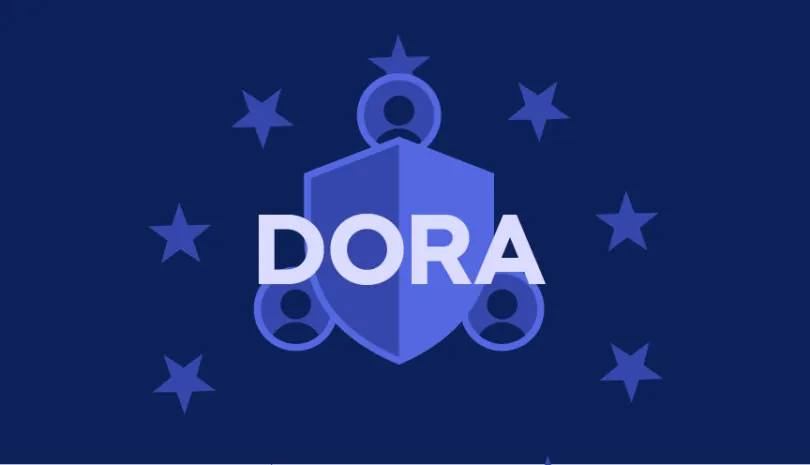The New York SHIELD Act, or Stop Hacks and Improve Electronic Data Security Act, sets a high bar for protecting the personal data of New York residents. Enacted in 2020, the law expands the definition of “private information,” strengthens breach notification requirements, and outlines strict standards for data security, even for companies located outside of New York.
What makes the SHIELD Act especially impactful is that it extends legal responsibility to third-party vendors and service providers. In a time when businesses rely on external platforms, processors, and SaaS providers, this added accountability significantly raises the stakes.
If your organization collects, processes, or stores data belonging to New York residents, SHIELD Act compliance isn’t optional. It must become a core part of how you manage vendor risk. This includes updated due diligence processes, stronger contract language, continuous monitoring, and coordinated breach response.
The SHIELD Act reflects a broader trend: regulators expect businesses to take responsibility for their entire data ecosystem, not just their internal operations.
Overview of the SHIELD Act
The SHIELD Act, passed by New York State in 2019 and enforced as of March 2020, was designed to modernize data protection laws in response to rising cyber threats. It applies to any business, regardless of location, that handles the private information of New York residents. That includes companies based outside the state and even outside the U.S.
One of the Act’s key provisions is its expanded definition of “private information,” which now includes biometric data, email addresses with passwords or security questions, and financial account details with access credentials. The law also strengthens data breach notification rules, requiring prompt disclosure to affected individuals when a breach involves this type of information.
Crucially, the SHIELD Act requires businesses to implement “reasonable safeguards” to protect data. While it doesn’t mandate specific technologies, it outlines administrative, technical, and physical measures companies should take; such as risk assessments, employee training, secure data disposal, and regular testing of security systems.
For businesses managing vendors, these provisions mean more than internal controls. You’re expected to ensure your third-party partners meet the same standards, making SHIELD compliance a key component of vendor risk management.
Vendor Risk Management Under the SHIELD Act
The SHIELD Act doesn’t stop at internal data practices, it explicitly extends legal responsibility to third-party vendors and service providers. If your business shares private information about New York residents with a vendor, you’re required to ensure that vendor implements reasonable security safeguards. Failing to do so can expose your organization to legal and financial consequences, even if the breach occurs outside your direct control.
To meet SHIELD Act expectations, vendor contracts must include clear security requirements. This may involve mandating administrative, technical, and physical controls that align with the Act’s standards; such as encryption, access controls, employee training, and breach response protocols. Simply trusting a vendor’s policies isn’t enough; businesses must take active steps to assess and verify compliance.
The Act increases overall accountability by holding organizations responsible for the full lifecycle of data, from internal handling to third-party processing. That makes vendor risk management a central part of SHIELD compliance. Businesses that rely on external partners must now treat those relationships as extensions of their own security posture; formalizing expectations, performing due diligence, and maintaining oversight long after the contract is signed.
Incorporating SHIELD Act Requirements into Vendor Risk Processes
To comply with the SHIELD Act, businesses must go beyond internal safeguards and actively incorporate vendor oversight into their risk management processes. That starts with thorough due diligence. Before onboarding any vendor that will handle New York residents’ data, assess their security posture, looking at policies, technical controls, and breach history. Questionnaires, security certifications, and evidence of past audits can provide valuable insight.
It’s also essential to formalize SHIELD Act expectations in your legal agreements. Contracts and service-level agreements (SLAs) should include language requiring vendors to maintain “reasonable safeguards” aligned with the Act’s standards. These clauses should outline specific expectations for encryption, access control, employee training, and breach notification responsibilities.
But compliance doesn’t stop at contract signing. The SHIELD Act implies ongoing accountability, which means you should regularly monitor vendors through periodic assessments, security reviews, and automated risk scoring tools. If a vendor’s risk profile changes due to a breach, acquisition, or downgrade in security, you should be prepared to reassess the relationship.
Embedding SHIELD Act requirements into your vendor lifecycle management ensures your business meets regulatory obligations while proactively reducing third-party risk.
Key Security Controls and Best Practices for Vendors
To align with the SHIELD Act, vendors must implement a range of security controls that fall under administrative, technical, and physical safeguards. These controls not only reduce the risk of a data breach but also demonstrate a commitment to responsible data handling, an increasingly important factor in vendor selection and oversight.
At the technical level, core practices include data encryption (both in transit and at rest), strong access controls to limit who can view or modify sensitive information, and secure disposal procedures for decommissioned hardware or outdated records. These safeguards help prevent unauthorized access and data leakage.
From an administrative perspective, employee training is key. Vendors must ensure their teams are educated on privacy risks, phishing, and incident protocols. In addition, having a documented incident response plan ensures a faster, more coordinated approach if a breach does occur.
Finally, vendors should conduct regular risk assessments and penetration testing to identify and remediate vulnerabilities proactively. These ongoing evaluations are essential for maintaining compliance and proving due diligence under the SHIELD Act.
Businesses should prioritize vendors that demonstrate maturity in all these areas and require evidence to back it up.
Managing Data Breach Risks Involving Vendors Under the SHIELD Act
The SHIELD Act requires businesses to notify affected New York residents of a data breach “in the most expedient time possible and without unreasonable delay.” This obligation applies even if the breach originates with a third-party vendor. As a result, companies must be prepared to coordinate closely with vendors during incident response and disclosure.
When a vendor experiences a breach involving your customers’ data, you may be held accountable for delayed or incomplete notifications, especially if your contracts lack clear expectations around breach reporting. That’s why it’s essential to define notification timelines, escalation paths, and communication procedures in vendor agreements before an incident occurs.
In practice, a strong breach response plan includes shared protocols for detection, containment, investigation, and notification. Vendors should be required to report any incident impacting your data immediately, and your internal teams should be ready to respond in partnership.
Beyond regulatory consequences, vendor-related breaches can erode trust and damage long-term relationships. The SHIELD Act reinforces the need for transparency, speed, and clear contractual language, so that both parties know exactly what to do when the clock starts ticking.
Challenges and Common Pitfalls in SHIELD Act Vendor Management
Even with strong internal compliance, many businesses fall short when it comes to managing vendors under the SHIELD Act. One of the most common pitfalls is overlooking smaller vendors or subcontractors. These third parties often have access to sensitive data but may lack mature security practices, making them attractive targets for attackers and weak links in your compliance chain.
Another frequent issue is vague or inadequate contract language. Without clearly defined security obligations, breach notification timelines, and audit rights, it’s difficult to enforce SHIELD Act requirements when a vendor fails to meet expectations. Businesses often assume a vendor’s reputation is enough, skipping the legal precision needed for true accountability.
Ongoing monitoring is another area where many programs fall short. A one-time security review at onboarding isn’t enough. The SHIELD Act expects businesses to maintain oversight, which includes regular assessments, updated documentation, and joint incident response coordination.
To avoid these pitfalls, companies need a proactive, structured vendor risk management program that accounts for both top-tier providers and niche service partners. Compliance under the SHIELD Act is continuous, not a box to check once and forget.
Practical Steps to Strengthen Vendor Risk Management for SHIELD Compliance
Strengthening your vendor risk management program for SHIELD Act compliance starts with building a comprehensive, repeatable framework. This includes clearly defined processes for onboarding, assessing, contracting, monitoring, and offboarding vendors that handle New York residents’ data. Each stage should map back to the SHIELD Act’s expectations for reasonable administrative, technical, and physical safeguards.
Technology can significantly streamline this effort. Risk assessment platforms allow you to evaluate vendors efficiently, flag security gaps, and track remediation progress over time. Automated monitoring tools can alert you to changes in a vendor’s risk profile, like a breach, lawsuit, or expired certification, helping you stay ahead of potential threats.
Equally important is internal education. Procurement and legal teams play a critical role in ensuring compliance language is included in contracts and that vendors are properly vetted. Training these teams on SHIELD Act requirements ensures they understand what to ask, what to expect, and when to escalate concerns.
SHIELD compliance isn’t just a security team responsibility; it requires cross-functional alignment, reliable tools, and a framework that treats vendor risk as a continuous business priority.
Next Steps for the SHIELD Act and Your Vendor Compliance and Risk Management
The SHIELD Act has raised the bar for vendor accountability by requiring businesses to take ownership of how third parties handle sensitive data. It’s no longer enough to protect your internal systems, you must also ensure that every vendor with access to New York residents’ information meets the same security standards.
Proactive compliance isn’t just about avoiding legal penalties. It’s about minimizing the reputational damage, operational disruption, and financial loss that can follow a third-party breach. That means reviewing your existing vendor risk processes, updating contracts, and continuously monitoring for compliance, not just at onboarding, but throughout the vendor lifecycle.
Panorays helps streamline this process by automating vendor assessments, tracking ongoing compliance, and highlighting gaps in security posture, including controls relevant to SHIELD Act requirements. Whether you work with five vendors or five hundred, the platform gives you a scalable way to manage third-party risk with confidence.
Ready to modernize your vendor risk management program? Book a personalized demo to see how Panorays can help your business stay compliant, reduce risk, and hold vendors accountable.
SHIELD Act Vendor Compliance FAQs
-
The SHIELD Act extends your legal responsibility to include third-party vendors that handle private information of New York residents. If a vendor stores, processes, or has access to this data, you are required to ensure they implement reasonable safeguards, just as you would for your own organization.
-
Any vendor that touches personal data belonging to New York residents may be subject to SHIELD-related scrutiny. This includes cloud service providers, SaaS platforms, payment processors, customer support firms, data analytics partners, and even subcontractors. The size of the vendor doesn’t matter; their access to sensitive data does.
-
If a vendor breach impacts New York residents, your organization may be held liable for failure to enforce reasonable safeguards or breach notification requirements. This can result in regulatory investigation, fines, and reputational harm, even if the breach occurred entirely outside your systems.
-
Start with a structured risk assessment that evaluates administrative, technical, and physical safeguards. Review relevant policies, certifications, and breach response plans. You should also include SHIELD-specific language in contracts and use continuous monitoring tools to track compliance over time.



